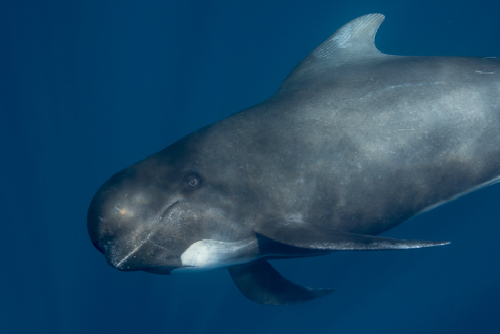EVERYTHING YOU NEED TO KNOW ABOUT
PILOT WHALES
Did you know that pilot whales are actually dolphins? In fact, after the orca, they are the second largest dolphin on the planet.
PILOT WHALE FACTS
- There are two species of Pilot Whale – the long-finned pilot whale and the short-finned pilot whale. They are very difficult to tell apart but short-finned pilot whales tend to prefer warmer waters while long-finned whales are found in colder waters.
- Pilot whales either black or dark grey with a pale anchor-shaped patch on their bellies.
- Their preferred diet is squid but they will also happily eat other small fish including herring. Pilot whales consume approximately 30 kilograms of squid and fish per day.
- Pilot whales are more elusive than other whales as they tend to swim in deeper waters.
- Like all whales, pilot whales are extremely intelligent.
- Sadly, pilot whales are renowned for beaching themselves. They are highly social and remain in their mother’s pod (which can contain over 100 whales) protecting the matriarch and following a single leader. It is thought this contributes to the number of mass strandings.
- Female short-finned pilot whales go through menopause.


WHERE CAN I SEE PILOT WHALES?
According to the Department of the Environment and Energy the Australian Distribution of Pilot Whales is as follows.
- Long-finned pilot whales are regularly sighted in waters off southern Australia but warming ocean temperatures may decrease sightings. There have been 55 recorded strandings of pilot whales in Australian territories, most of them in Tasmania.
- Short-finned pilot whales occur in warmer waters – both tropical (22-32 degrees) and temperate (10 -22 degrees). There have been relatively few strandings in Australia compared to long-finned whales. However, a pod of 150 short-finned pilot whales sadly stranded itself in Hamelin Bay off the south-west coast of Western Australia in 2018.
Want to know more about other whales species? We are lucky to have a number of different whale species visiting Jervis Bay.


